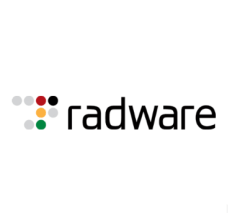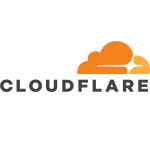I am using Radware Cloud WAF and have been using it for the last five years. Recently, I considered deploying Radware Discovery API. I have taken a proof of concept of Radware Discovery and plan to onboard it in the next one or two months.
Additionally, it is essential for reducing DDoS attacks within my organization.
We have had a very good experience with Radware Cloud. It has significantly reduced attacks on our applications. All our critical applications are onboarded to Radware, which uses AI to automatically learn behavior patterns and refine security policies.
It also provides comprehensive protection against the top ten web application security risks. Importantly, we have not experienced any zero-day attacks because Radware Cloud offers protection against emerging threats. The Emergency Response Team is very active, and I consistently receive excellent responses from them.
It's a very comprehensive and user-friendly solution. It's easy to implement and integrate. We also have found it's easy to reach support if we need help.
The solution has helped us enhance our cyber security posture. It's good for data protection. We've been able to protect our public-facing infrastructure.
We haven't had any incidents or compromises in the entire three years we've used Radware.
The Cloud WAF Service blocks unknown threats and attacks effectively.
The analytics are very good.
The API discovery feature is very helpful, and end-to-end API protection is useful. Everything is encrypted to ensure effective protection. We get Layer 7 protection from it.
The API discovery is a very useful feature. It is easy to use. A few months before, I did a demo to learn more. We can see which APIs are being used or not. It helps us discover and remove unused APIs. In our case, we found 20 APIs that were not used by the team.
We use the CDN features. It's pretty easy to use the combination of CDN and Cloud WAF. It helps your Radware Cloud connect with the nearest server or the Redware server. We have multiple servers worldwide, so this is useful for us.
Integration is very easy. Sometimes, we have 10 to 15 applications hosted on the cloud. It's very easy to add applications. It's not complicated.
From the Radware cloud, it's integrated with our SOC. All the logs are received by the SOC.
An area of improvement is the visibility at the attack level. Management often asks for detailed reporting on attacks such as botnet and zero-day attacks, including the number of attacks within a month, week, or day. Improving dashboard capabilities to provide this information clearly for management is crucial.
They need to improve their reporting. We need to present our management with reports and we need better options for reporting. They don't want lengthy reports. They need something that is one to two pages and includes everything - a more high-level document with the most important information.
I have been using Radware Cloud WAF for the last five years.
I give the stability a score of 9.5 out of ten. I have never encountered downtime, maintenance-related issues, or latency. As a network and cybersecurity specialist, this provides me with peace of mind.
The scalability is fine. We haven't faced any issues.
The support provided by Radware's Emergency Response Team is excellent. They respond promptly to any queries or concerns raised via the hardware portal according to SLA expectations. The responses are satisfactory. Although I have not required much support in the past five years, whenever I did, I received answers to my queries.
I did not use a different solution previously.
The initial setup was straightforward. We onboarded critical applications in a prioritized manner, starting with the most critical and gradually moving to the others. The setup process was smooth, and we were able to get visibility from the applications post-onboarding.
I am not involved in purchasing or negotiating pricing, as this is done by our material team. My role is to recommend the products we need. The material team discusses with partners and determines the appropriate pricing.
I rate the overall solution a nine out of ten. By not giving a perfect score, I recognize that there is room for improvement, which is crucial for fostering development. It is essential for Radware to continue improving and researching advancements needed to enhance customer experience.



















Hi Bhavesh, there are a couple of new AI tools worth mentioning. One is SOC AI, which can analyze logs in just seconds, and the other is DocXpert, which acts as an agent for all Cloud Portal documentation. If you’d like to learn more, you can connect with us via our customer program at RadwareLinkProgram@Radware.com, and we’ll be happy to share further details. Sharon.